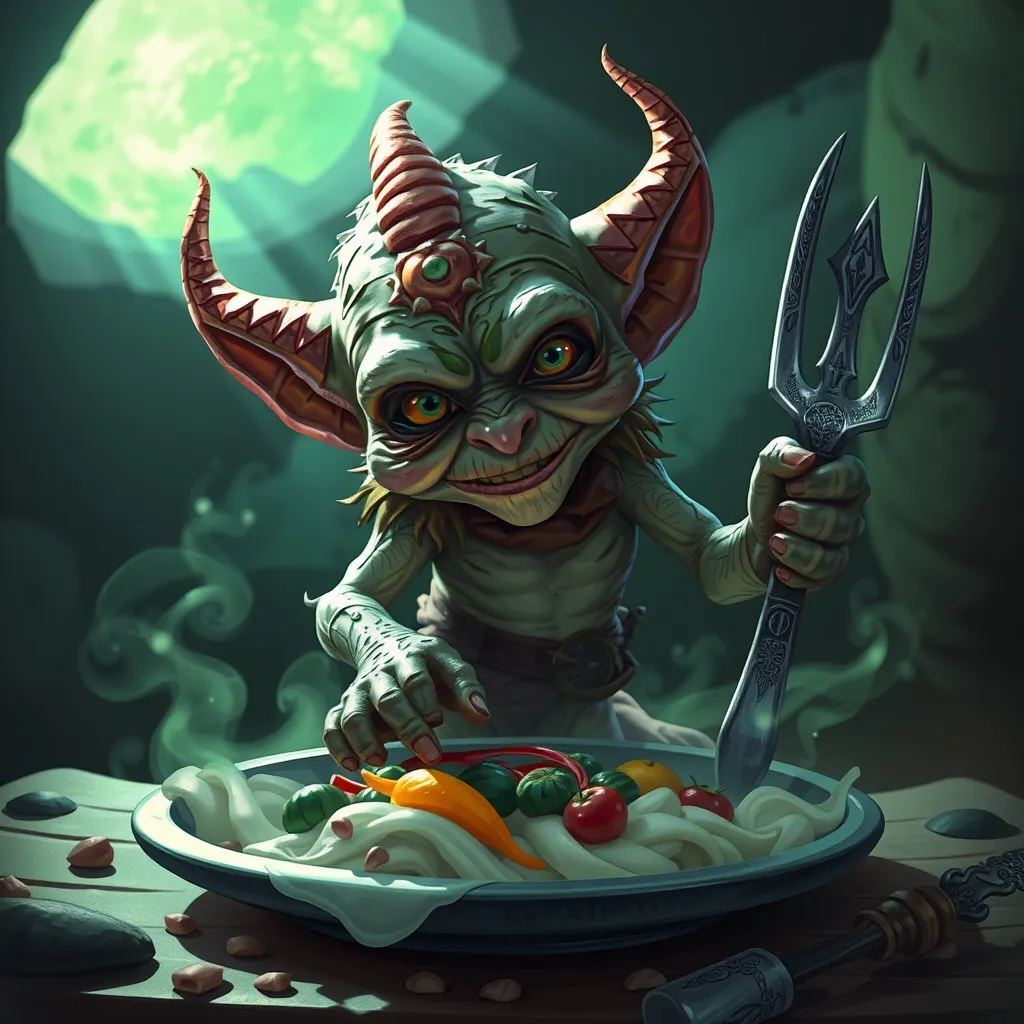Goblin Cuisine: Discovering the Culinary Delights of the Goblin Realm
I. Introduction to Goblin Cuisine
Goblin cuisine is a rich tapestry woven from the threads of goblin culture, history, and local resources. This unique culinary tradition reflects the goblin’s resourceful and often mischievous nature, using ingredients that are readily available in their environment. Food plays a significant role in goblin society, not only as sustenance but also as a means of celebration and community bonding.
The purpose of this article is to explore the unique dishes, cooking techniques, and cultural significance behind goblin cuisine, offering a glimpse into a world where flavor and tradition intertwine in delightful ways.
II. The Ingredients of Goblin Cooking
At the heart of goblin cooking lies a diverse array of ingredients that are both practical and imaginative. Goblins are known for their foraging skills, and their meals often feature a variety of ingredients sourced from their lush surroundings.
A. Commonly used ingredients in goblin cuisine
- Foraged plants and fungi: Goblins are skilled foragers, collecting wild herbs, roots, and various fungi that add unique flavors and textures to their dishes.
- Unique proteins: Insects and small game are staple protein sources in goblin diets, often prepared in innovative ways to enhance their taste.
- Magical ingredients: Certain mystical plants and components are integrated into dishes, believed to impart special properties, such as enhancing health or bringing good fortune.
B. The role of sustainability and scavenging in ingredient sourcing
Sustainability is a core principle of goblin cooking. Goblins excel in scavenging, utilizing what nature provides without over-exploiting their environment. This practice not only ensures a steady supply of fresh ingredients but also fosters a deep respect for the earth and its resources.
III. Traditional Goblin Dishes
Goblin meals are characterized by their hearty and often whimsical nature. Here are some staple dishes that embody the essence of goblin cuisine.
A. Overview of staple meals
- Gritty Grub Stew: A thick and hearty stew made from a variety of root vegetables, foraged greens, and a mix of proteins. The dish is simmered for hours to develop deep flavors, often served with chunks of bread made from scavenged grains.
- Warty Toad Pies: These savory pastries are filled with a mixture of seasoned meats and vegetables, encased in a flaky crust. The name is derived from the pie’s rustic appearance, resembling the bumpy skin of a toad.
- Slime Soup: A unique concoction that features a blend of seaweed, herbs, and magical ingredients, resulting in a vibrant green soup that’s both nutritious and enchanting.
B. Seasonal specialties and local variations
Goblin cuisine varies by region and season, with each community celebrating local ingredients. For instance, during the harvest season, dishes may include more grains and fruits, while winter meals are heartier, focusing on preserved ingredients.
IV. Goblin Cooking Techniques
The methods goblins use to prepare their meals are as distinctive as the ingredients themselves.
A. Unique cooking methods
- Fire-pit roasting: A communal cooking method where whole animals or large batches of food are roasted over an open flame, infusing dishes with a smoky flavor.
- Underground baking: Goblins often dig pits in the ground to create natural ovens, allowing bread and other items to bake slowly underground, resulting in a moist, flavorful product.
B. Use of natural tools and utensils
Goblins prefer using tools made from natural materials. Wooden spoons, stone knives, and clay pots are common, reflecting their connection to the environment.
C. The art of flavoring
Flavoring is a crucial aspect of goblin cooking, with a focus on:
- Herbs and spices collected from their surroundings, often dried and mixed to create unique blends.
- Secret family recipes that include special spice combinations that are passed down through generations.
V. Goblin Feasts and Festivals
Food is central to goblin social life, especially during feasts and festivals that celebrate their culture and community.
A. Description of traditional gatherings and celebrations
Goblins come together during seasonal festivals, where food plays a pivotal role. Large communal tables are set with an array of dishes, and everyone contributes something to the feast, fostering a sense of unity.
B. Signature dishes served during feasts
During these gatherings, special dishes are prepared, such as:
- Grand Goblin Goulash: A massive stew made in a cauldron, featuring all the best ingredients from the harvest.
- Celebratory Cakes: Made with wild fruits and nuts, these cakes are often decorated with edible flowers and served as a symbol of abundance.
C. The role of food in goblin social life and community bonding
Meals serve as an opportunity for goblins to share stories, celebrate achievements, and strengthen community ties. Food is not just sustenance; it is a way to connect and create lasting memories.
VI. Goblin Beverages: From Brews to Potions
Drinks are an integral part of goblin culture, often enjoyed alongside meals or during social gatherings.
A. Traditional drinks and their cultural significance
- Swamp Nectar: A sweet, sticky drink made from nectar collected from swamp flowers, often enjoyed during celebrations.
- Fungal Ferments: Goblins create unique alcoholic beverages from fermented fungi, each with its own flavor profile and effects.
B. The practice of potion-making and its culinary overlaps
Many goblins are also skilled potion-makers, blending culinary practices with magical ones. Ingredients used in cooking often overlap with those used in potions, blurring the lines between food and magic.
VII. Goblin Cuisine in Modern Context
In recent years, goblin cuisine has gained popularity beyond its traditional roots, inspiring contemporary culinary trends.
A. Influence of goblin cuisine on contemporary culinary trends
Chefs around the world have begun to experiment with foraged ingredients and rustic cooking techniques inspired by goblin practices.
B. The rise of goblin-inspired restaurants and food festivals
Restaurants celebrating goblin cuisine have emerged, featuring menus that highlight traditional dishes with modern twists. Food festivals dedicated to goblin culinary traditions attract enthusiasts eager to experience this unique flavor profile.
C. Fusion dishes that combine goblin flavors with other cuisines
Chefs are increasingly creating fusion dishes that blend goblin flavors with global cuisines. Examples include:
- Gritty Grub Tacos, combining traditional stew ingredients in a taco format.
- Warty Toad Pie Pot Pie, which infuses classic pot pie with goblin ingredients and flavors.
VIII. Conclusion: Embracing the Goblin Culinary Adventure
Goblin cuisine is a fascinating exploration of flavors, techniques, and cultural identity. Its richness and diversity remind us of the importance of celebrating culinary traditions from all walks of life.
We encourage readers to dive into the world of goblin-inspired recipes, experiment with unique ingredients, and embrace the adventure that comes with exploring new culinary landscapes.
Ultimately, celebrating diverse culinary cultures enriches our understanding of the world and fosters appreciation for the creativity and resourcefulness found in every kitchen.



